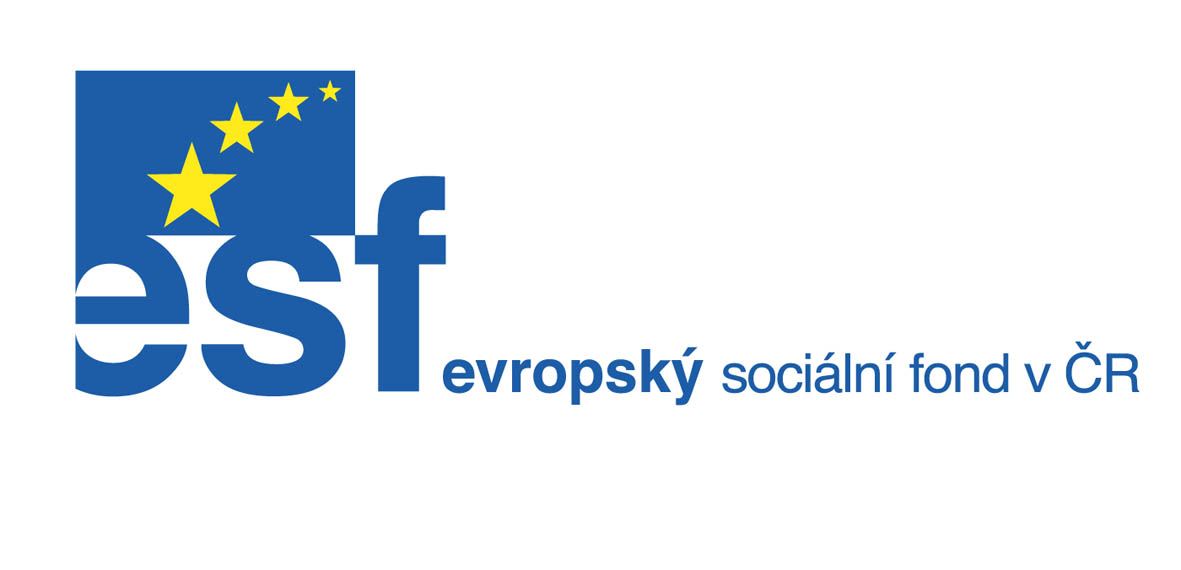AFFECTGATING DAN KING CHRIS JANISZEWSKI UNIVERSITY OF FLORIDA
AFFECTGATING DAN KING CHRIS JANISZEWSKI UNIVERSITY OF FLORIDA
Extended Abstract
Affect-Gating
Dan King
Chris Janiszewski
University of Florida
* Dan King ([email protected]) is marketing doctoral student at the Warrington College of Business Administration of University of Florida, and Chris Janiszewski ([email protected]) is the Jack Faricy Professor of Marketing, P.O. Box 117155, Gainesville, FL 32611-1755. Phone: 352-2733286. Fax: 352-8460457. We thank Michel Pham for his insightful comments on this research. This article is based on the first author’s doctoral dissertation.
Extended Abstract
Extant theories of affective networks (e.g., Bower 1981) assume that affect is a unitary construct. This article integrates emerging findings in the neuroscience literature to show that there are, in fact, two major types of affect: state affect and hedonic affect (Barbano and Cador 2007), and that state affect can influence the experience of hedonic affect in surprising ways. First, positive affect can come in the form of positive state affect and positive hedonic affect. Positive state affect is mediated by dopaminergic activation and generates a light, airy feeling that makes people feel upbeat (Sacks et al. 1972). In contrast, positive hedonic affect is mediated by opioidergic activation and generates a pleasurable feeling that causes people to like a specific stimulus (Pecina, Smith, and Berridge 2006). Similarly, negative affect can come in the form of negative state affect and negative hedonic affect. Negative state affect is mediated by corticotrophin-releasing factor (CRF), and generates a heavy feeling that makes people feel downcast (Panksepp 1998). In contrast, negative hedonic affect is mediated by inhibition of orbitofrontal cortex firing, and generates a feeling of satiation or even aversion for the stimulus (Rolls 2004, 2005). Because there is significant pathway interaction in the affective circuits for both types of affect, state affect can influence the experience of hedonic affect in surprising ways. Negative state affect, for example, can lead to more intense positive hedonic affect, leading to a result that is surprising from the standpoint of mood-congruent models of affective influence on perception (e.g., Bower 1981; Isen 1989). Likewise, positive state affect can lead to less intense positive hedonic affect.
Animal research in mammals (who share a similar neural architecture with humans in terms of affective circuits) suggests how state affect can influence hedonic affect. Neurological research demonstrates that organisms are more attuned to different sensory channels during different affective states (Martel et al. 1993). In the process of natural selection (Darwin 1859), the relative value of information in different sensory channels changes as a function of the affective state. For example, mammals under negative affect are more attuned to tactile stimulation, because negative affect indicates separation from the mother, and tactile stimulation indicates reunion with the mother (Keverne, Martensz, and Tuite 1989). In contrast, mammals under positive affect are more attuned to visual stimulation, because positive affect indicates self-sufficiency and the organism’s ability to search for rewards (Panksepp 1998). Affective states thus perform a gating function for the sensory-perceptual system (hence “Affect Gating”), in which information from different sensory channels are overweighted or underweighted as a function of the affective state. Marketers who understand the affective gating process will thus benefit from knowing which attributes to focus on for particular product categories and segments. Consumers who are using a product to comfort themselves (e.g., lotions, comfort food) will be more sensitive to tactile information, whereas consumers who are using a product to celebrate will be more sensitive to visual information.
Experiment 1 suggests that consumers are more attuned to tactile attributes of a product during a negative affective state. Consumers under negative affect generated more perceptions of the lotion’s tactile qualities, such as its creaminess and moisturizing properties. In contrast, consumers under positive affect generated more perceptions of the lotion’s visual qualities, such as its blue color. Experiment 2 suggests that consumers under negative affect were more attuned to the product’s tactile qualities, and experienced more hedonic pleasure, than consumers under positive and neutral affect. Mediation analyses suggest that greater attunement to tactile qualities led to hypervaluation of the product (greater willingness-to-pay). Experiment 3 suggests that consumers under negative affect were more sensitive to changes in the veridical tactile quality of the product, whereas consumers under positive and neutral affect could not perceive changes in tactile quality. Experiment 4 aims to show that blocking the visual channel amplifies the information coursing through the tactile channel, hence amplifying the hedonic experience for consumers in negative affect. This may explain the phenomenon of why people close their eyes when they receive a massage. Experiment 5 shows that negative affect induces a physiological response of coldness (to induce organisms to seek social support under negative states), and experiment 6 shows that adding warming agents to lotions amplifies the tactile experience, hence improving the hedonic experience of consumers under negative affect. The article discusses conceptual implications of the “two affects” view and the gating process.
REFERENCES
Barbano, Flavia and Martine Cador (2007), “Opioids for Hedonic Experience and Dopamine to get Ready for it,” Psychopharmacology, 191 (April), 497-506.
Bower, Gordon (1981), “Mood and Memory,” American Psychologist, 36 (February), 129-48.
Darwin, Charles (1859), The Origin of Species: By Means of Natural Selection or The Preservation of Favoured Races in the Struggle for Life, Murray (United Kingdom).
Isen, Alice (1989), “Some Ways in Which Affect Influences Cognitive Processes: Implications for Advertising and Consumer Behavior, in Cognitive and Affective Responses to Advertising, ed. Alice M. Tybout and Patricia Cafferata, Lexington, MA: Lexington Books, 3–37.
Keverne, Eric, Nicholas Martensz, and Bernadette Tuite (1989), “Beta-endorphin Concentrations in Cerebrospinal Fluid of Monkeys Are Influenced By Grooming Relationships,” Psychoneuroendocrinology, 14, 155-61.
Martel, Frances M., Claire M. Nevison, David F. Rayment, Michael J.A. Simpson, and Eric B. Keverne (1993), “Opioid Receptor Blockade Reduces Maternal Affect and Social Grooming in Rhesus Monkeys,” Psychoneuroendocrinology, 18 (March), 307-321.
Panksepp, Jaak (1998), Affective Neuroscience: The Foundations of Human and Animal Emotions, New York, NY: Oxford University Press.
Rolls, Edmund (2004), “The Functions of the Orbitofrontal Cortex,” Brain and Cognition, 55 (June), 11-29.
Rolls, Edmund (2005), Emotions Explained, Oxford: Oxford University Press.
Sacks, Oliver W.; Kohl, Marjorie S.; Messeloff, Charles R.; and Schwartz, Walter F. (1972), “Effects of Levodopa in Parkinsonian Patients with Dementia,” Neurology, 22 (May) 516-519.
Tags: janiszewski, chris, university, florida, affectgating
- STANDART FORM 2 “TEBLİGAT İÇİN ADRES BEYANI” İTÜKKTC EĞİTİM
- WARSZAWA 20200825 REGULAMIN FOTOWARSZTATÓW „ILFORD PHOTO WALK 2020 WROCŁAW”
- NA TEMELJU ČLANKA 32 STATUTA GRADA ŠIBENIKA(„SLUŽBENI GLASNIK GRADA
- KOMUNIKAT POWIATOWEGO LEKARZA WETERYNARII W ZAWIERCIU W
- DK3R 04 (HSC368) PRESENT INDIVIDUALS’ NEEDS AND PREFERENCES ELEMENTS
- F UNDRAISING GUIDELINES AMTGARD KINGDOM OF THE EMERALD HILLS
- T YEAR LEVEL YEAR 7 8 9
- MAS KRÁLOVSTVÍ – JESTŘEBÍ HORY O P S POD
- ZAŁĄCZNIK NR 4 DO WSZEP 10ZO2017 ZAŁĄCZNIK NR 4
- CURRICULUM VITAE – BOŽENA LIPEJ IME IN PRIIMEK BOŽENA
- EJERCICIO PREPARATORIO – CONTESTA LAS PREGUNTAS 1 ¿DÓNDE NACISTE
- OCEAN FLOOR WEBQUEST HTTPWWWOCEANUDELEDUEXTREME2002 1 DIVE IN MISSION TO
- FORMAT III PENGUMUMAN PANITIA SELEKSI PENGISIAN JABATAN PIMPINAN TINGGI
- PARENTS…IMPORTANT SAFETY REMINDERS THE SAFETY OF OUR CHILDREN
- LA CITTÀ DI STRASBURGO E IL CONSIGLIO D’EUROPA CON
- OBRAZAC TRG – 16V CRNA GORA ZAVOD ZA STATISTIKU
- PALABRAS DEL EMBAJADOR JEANCLAUDE NOLLA OBSERVADOR PERMANENTE DE FRANCIA
- + MÀSTER EN METODOLOGIA DE LA RECERCA APLICADA A
- WHETHER WHITHER WITHER NEW TECHNOLOGIES FOR SAFER PROCESS DESIGN?
- Ðïࡱáþÿ ¥á[à п0ibjbj 2pa!pa! u Ÿÿÿÿÿÿ·x92 x92 ð ú
- PROCEDURA „NIEBIESKIEJ KARTY” W NIEPUBLICZNYM PRZEDSZKOLU INTEGRACYJNYM „OSINKOWO” W
- CÓDIGO DE PROCEDIMIENTOS PENALES PARA EL ESTADO DE SONORA
- HOMEWORK CHAPTER 13 135 CIRCULATION IS THE LIFEBLOOD OF
- EL CONSELLER DE INFRAESTRUCTURAS Y TRANSPORTE EN EL INICIO
- POZIVNICA NA POSLOVNU MICE RADIONICU U LONDONU (VELIKA BRITANIJA)
- BOCUTOĞLU BERBER ÇELİK 33 2BÖLÜM MİLLİ GELİRİ HESAPLAMA YÖNTEMLERİ
- INTERNATIONAL LAW POLSCI 3083 FALL 2010 PROF DR
- 8 CHỦ TỊCH NƯỚC CỘNG HÒA XÃ HỘI CHỦ
- UNIDAD 7 TEMA 8 DEL LIBRO MODALIDADES DISCURSIVAS II
- GAGNGW41 PÁGINA 3 ORGANIZACIÓN MUNDIAL DEL COMERCIO GAGNGW41 5
SHARK BIOLOGY COA 422422L THE UNIVERSITY OF SOUTHERN MISSISSIPPI
SZKOLNY ZESTAW PODRĘCZNIKÓW ROK SZKOLNY 20212022 TECHNIKUM KLASA
EXHIBITS RELEASE AND HOLD HARMLESS AGREEMENT IN CONSIDERATION OF
 INFORMACE O REALIAZACI A UKONČENÍ PROJEKTU ČESKÁ SVÁŘEČSKÁ SPOLEČNOST
INFORMACE O REALIAZACI A UKONČENÍ PROJEKTU ČESKÁ SVÁŘEČSKÁ SPOLEČNOST TABLE 1 CHARACTERISTICS OF MDRTB SURGICAL PATIENTS WITH BILATERAL
TABLE 1 CHARACTERISTICS OF MDRTB SURGICAL PATIENTS WITH BILATERALMILLA BLAGOEVA VIDINA 06141983 DEPARTMENT OF POLITICS WHETHER LIVING
 OFFICE OF PROCUREMENT BUSINESS CARDS LETTERHEADS AND ENVELOPES ORDER
OFFICE OF PROCUREMENT BUSINESS CARDS LETTERHEADS AND ENVELOPES ORDER 2 AL CONTESTAR REFIÉRASE AL OFICIO N° 13291 30
2 AL CONTESTAR REFIÉRASE AL OFICIO N° 13291 30 GRIGLIA DI PRESENTAZIONE PROGETTI “EDUCAZIONE ALLA SALUTE” AS 20142015
GRIGLIA DI PRESENTAZIONE PROGETTI “EDUCAZIONE ALLA SALUTE” AS 20142015 UNIVERSIDAD AUTÓNOMA DE CIUDAD JUÁREZ ACTA DE RESULTADOS EN
UNIVERSIDAD AUTÓNOMA DE CIUDAD JUÁREZ ACTA DE RESULTADOS ENŠOLSKA PRAVILA OCENJEVANJA ZNANJA II GIMNAZIJE MARIBOR NA PODLAGI
TEMA 7 EVALUACIÓN DE LOS TRASTORNOS DE LA LECTURA
JUNTA DE BARRIO LA CANYADA CENTRO SOCIAL C
ZAŁĄCZNIK NR 3 DO ZAPYTANIA OFERTOWEGO FORMULARZA OFERTY …………………………DNIA
 WEB SERVICE IMPLEMENTATION METHODOLOGY PUBLIC REVIEW DRAFT 6 JULY
WEB SERVICE IMPLEMENTATION METHODOLOGY PUBLIC REVIEW DRAFT 6 JULY BRUGERVEJLEDNING TIL BRUGERTILBRUGER OPRET EN PROFIL KLIK IND PÅ
BRUGERVEJLEDNING TIL BRUGERTILBRUGER OPRET EN PROFIL KLIK IND PÅ ITI INSTRUCTIVO TECNICO DE INSTALACIÓN SIGIR INFORMACIÓN
ITI INSTRUCTIVO TECNICO DE INSTALACIÓN SIGIR INFORMACIÓN SYLABUS WYDZIAŁ KIERUNEK SPECJALNOŚĆ WYDZIAŁ NAUK O
SYLABUS WYDZIAŁ KIERUNEK SPECJALNOŚĆ WYDZIAŁ NAUK O THE TOURIST ATTRACTIONS OF LODZ MANUFAKTURA MANUFAKTURA IN A
THE TOURIST ATTRACTIONS OF LODZ MANUFAKTURA MANUFAKTURA IN A USING YOUR KEYPAD YOUR KEYPAD OR UIU (USER INTERFACE
USING YOUR KEYPAD YOUR KEYPAD OR UIU (USER INTERFACE